Text
OQM Playlist : Life during quarantine #10

With the 10th Life during quarantine playlist Nick Triani reflects on last week's tragic events whilst fleetingly celebrating the life of American icon Clint Eastwood.
Listen to Life during quarantine #10
Marshall Law in all but name
This week’s events in the USA will cast a long shadow, not only over the country, but everywhere else in the world. As news and footage of peaceful protestors being brutally treated by their own police force started to flood in on social media, I shed a tear for what was happening. Still this shit. Much has been written, soul searching has begun in earnest, blackout days have occurred on social media and speculation as to why is rife, but it all leads to two things: racism is real and one person.
The current president of the USA is a racist, has used racist rhetoric throughout his tenure – and a race war with his own people now works as a timely distraction from the more than 100,000 dead this president has presided over during the pandemic. In short, Trump must go. Can we wait for an election in November? And will that election bring the desired result? What is clear, amongst all the rhetoric and threats against his own people, to this president black lives don’t matter.
Clint at 90
Amongst all the distress of the last week, another American icon had a birthday. There seemed to be a massive irony that Clint Eastwood‘s 90th birthday fell at this time. Famed for playing Dirty Harry, the ruthless lawman dishing out his own brand of violent and brutal justice on the streets of San Francisco – even he would have balked at some of the treatment being dished out this last week from the various police departments across the USA. Often accused of representing fascism, the Harry Callahan character was far more in touch with the blue collar community than actually given credit for – even though this is in some quarters an idsealised version of a white policeman. This is something that Eastwood has often represented in his cinema, both as a director and actor.

Despite Eastwood being an avowed republican and a no-nonsense supporter of some pretty awful politicians over the years, much of his cinema has the trait of a genuine libertarian. Eastwood’s films have tended to be cyphers for left-wing ideology or at least they tend to display a certain humanity not associated with the right. I have written about this before, and whatever you think of Eastwood, even if you don’t like his politics, he has built a formidable body of work that stands up to the deepest scrutiny cinema offers.
The Playlist
I’m not sure how much longer this quarantine holds, or even if it exists anymore. Certainly in Finland people seem to be relaxing. We have to wait to see if a second wave arrives before popping the champagne. But I think I’ll keep the playlist going in any case. So see you next week – same time, same place?
1 note
·
View note
Text

OQM Playlist: Life during quarantine #16
Listen to Life during quarantine #16 here
Away from the numbers
As someone who has been able to work during Covid-19 (yes, I am aware of this privilege in these times), it’s a daily reminder of how – I’m paraphrasing here – we are ‘slave to the numbers’. Numbers determine so much nowadays. Who gets what, who doesn’t get this. Numbers represent more than hard data, this new hard statistical currency also determines opportunity. Yes, money brings comfort but ultimately having the right numbers brings you the money.
I’m not being vague, this new numerical autocracy is vague. We have so little time to go deep on a number of issues, that ultimately studying the numbers gives us a quick, superficial answer on pressing concerns, often ignoring underlying issues; be it engagement, polling, listening, voting, movement, our health and so forth – nothing is too complex for the numbers to give you the simplest of solutions. A quick fix if you like on the state we’re in, without asking too many questions.

Black/White
Things are no longer clear cut, or black and white – at least in an analytical sense. How is one supposed to traverse modern living (or dying) without proper recourse or analysis of those numbers involved? Do we even have access to the statistics that inform our well-being?
And how do those numbers take in my personality, my generally inquisitive and open nature, my artistic flourishes, my impassioned objectivity, my lust for life, my compassion, my sensitivity and the deepest recesses of my soul? I haven’t a clue. The real story requires more than a calculator. But I’m telling you now, you’d better sort it out because your life may count on those numbers being high.

The Playlist numbers
You’ll find 30 songs, lasting approximately 1 hour and 59 minutes. At least four of the songs were released this year 2020. A further 6 are from the previous decade (10 years) with the rest of the music coming from the years between 1950 and 2010 (60 years). This is the 16th Life during quarantine playlist – 4 months worth of weekly (7 day) playlists. Enjoy.
1 note
·
View note
Text

OQM Playlist: Life during quarantine #15
With this latest Life during quarantine playlist, Nick Triani pays tribute to cinema composer Ennio Morricone, who passed away Illustration: Juulia Niiniranta
Farewell Maestro
Initially, it had a lot to do with my Italian origins, but in a musical sense Ennio Morricone has a place in my heart as one of my all time favourite musicians and composers. It’s been hard finding a musical hero from Italy. Certainly from a pop and rock perspective, Italy hasn’t furnished me with music I feel can hold a candle to music produced in the UK, US, France or Finland – as a rough conglomerate of nations. Morricone changed that perception of Italian music for me many years ago.
The discovery of Ennio Morricone’s music through the Spaghetti Western themes he forged with Sergio Leone‘s expressive cinema, opened a doorway into what I felt was some of the most emotional music ever made by anyone. Morricone’s passing this week at the age of 91 hit me harder than most musician deaths. The universal nature of the tributes paid to Morricone supply a valuable testament not only to his influence as a composer and arranger, but his ability to appeal to the widest of audiences.
The heart of the matter
Back in 2016, Morricone visited Helsinki for a concert and I wrote for OQM at the time ; “Is there a more recognizable composer in music than Ennio Morricone? A scream, a harmonica, Bolero guitars and a violent whip cracking all point to the Italian maestro. Of course the music Morricone composed for those cheap variations on the true American film, Spaghetti Westerns, ring through popular culture as much today as they did in the 1960s. One could also argue that no filmmaker or composer since Sergio Leone and Morricone have managed to marry as magical a line between the visual and the musical as those two did together. Perhaps Alfred Hitchcock and Bernard Herrmann come close and if you’re being generous, Steven Spielberg and John Williams are in with a shout. But the choreographic excellence of Once Upon A Time In The West still remains the cineasts high point in sound and vision.”
And whilst I stand by all that, those words don’t convey the pure emotion and heartfelt sincerity Morricone’s music often displayed. As was said by many earlier this week when news of Morricone’s death was breaking, much of his music outstripped the quality of the films his compositions were married with, or at the least elevated those films. But it still doesn’t explain how Ennio was able to bring so much feeling and, once again, the purest expression of emotion from so many of his compositions. As this week’s Life during quarantine playlist plays occasional tribute to one of the highest architects of composition, I can only suggest that those moving soundscapes came from an artist with the biggest of heart’s.
0 notes
Text
OQM Playlist: Life during quarantine #27

With this new Life during quarantine playlist, Nick Triani ponders Randy Newman's standard 'I Think It's Going to Rain Today' and the emotions it evokes.
Lockdown Don’t open the borders we said. Keep wearing the masks we said. Avoid crowds we said. Stay home if feeling ill we said. Lockdown is here again. It’s tiring to discuss but our inherent greed and wish to keep the wheels of capitalism churning might do for us yet. The welcome news that a vaccine is now a reality and just around the corner is a chink of light in this most rotten of years…
Human kindness overflowing The songwriters that have benefited from the patronage of Judy Collins are too numerous (for the sake of brevity) to mention here. But let’s at least recognise Collins’ role in the careers of Joni Mitchell, Leonard Cohen, Donovan (in the US), Jimmy Webb and Randy Newman. Why Collins doesn’t have some kind of monument in her honor for music discovery is baffling, she also never had the title A&R woman attached to her name although that’s clearly what she did. The fact that in this era of rediscovery and music nostalgia Collins is not more readily identified amongst the greats of popular music is quite simply a conspiracy against women. Today I focus on a song by Randy Newman first introduced by Collins, ‘I Think It’s Going to Rain Today’ (or in some cases ‘I Think It’s Gonna Rain Today’).

Collins recorded a version of the song for her In My Life album from 1966, though Julius LaRosa is credited as having released a version a few months earlier. It’s Collins interpretation that became the template for the song’s subsequent ubiquity. To confirm this, LaRosa’s version doesn’t appear anywhere.
30 different versions Over the years all kinds of bands and artists of varying degrees of fame and fortune have tried to interpret ‘I Think It’s Going to Rain Today.’ I’ve cherry picked 3o different takes for this playlist. You may think, how crazy is that, listening to the same song so many times in a row, but please have a try because this may surprise you. Many of these interpretations are achingly similar in style, but I do think these vary enough so that you can sit through an hour and 40 minutes of the same song. The middle eight is the big variance in a lot of these versions (something about “Tin can at my feet, Think I’ll kick it down the street.”) Generally, most versions lead with piano and have string arrangements. Yet, the story changes with each voice. The latest version on this playlist is from 2020, which gives you some kind of idea of the longevity of the song.
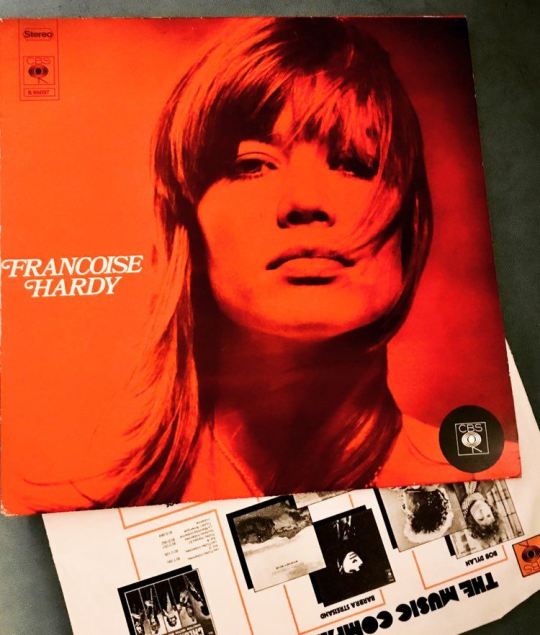
I personally have a soft spot for the Françoise Hardy take from 1972. Her fractured English and the baroque string arrangement brings an intimate melancholy to the song. Leonard Nimoy does a great pass that pleases by not quite being right. Still, it might just be that Randy Newman’s own version from his debut album in 1968, impeccably produced by Van Dyke Parks, is the best. Newman is not the greatest singer, but has oodles of character and personality, which means the song retains its weary edge and infinite sadness (which is a bit lost on many of these takes.)
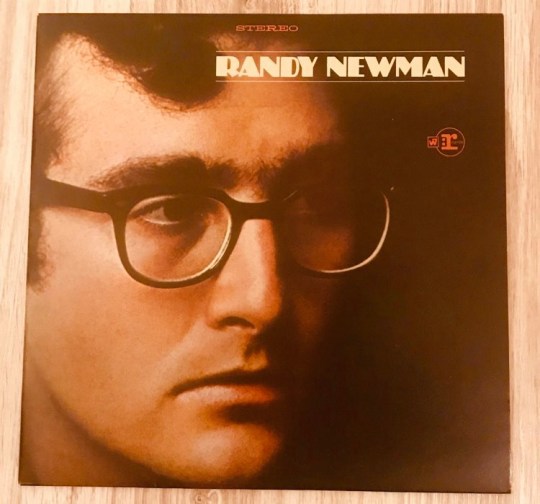
A younger generation may recognise Newman as the Toy Story soundtrack guy. That’s ok and cool. But Newman also lays a belated claim to be the pre-eminent songwriter of his generation. Recently this song has taken on a life of its own for me, reflecting collective grief and my hopes for a better day. The song also tells something about empathy and giving, even indulging our obsession of connecting our emotions to the weather. ‘I Think It’s Going to Rain Today’ touches a raw nerve, the weary sadness at the heart of the song can also comfort and help in getting through the ache. I believe that’s what Newman initially wanted when he wrote the song.
0 notes
Text
OQM Playlist: Life during quarantine #29
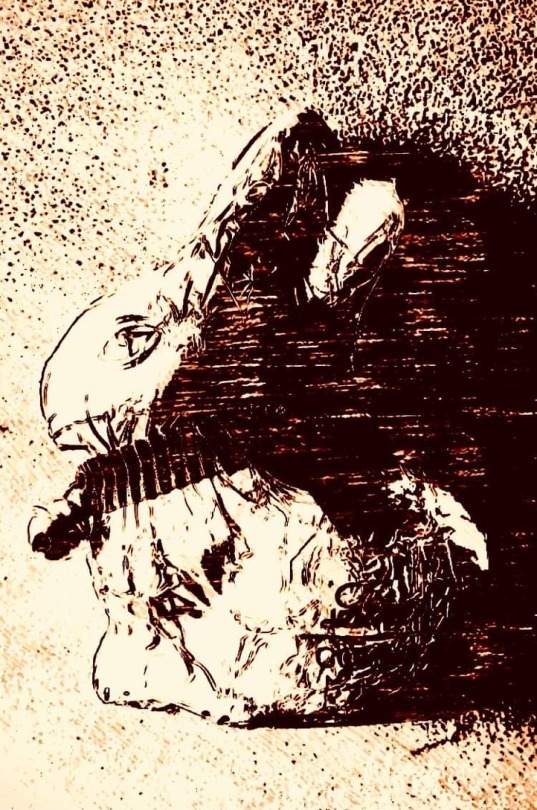
Nick Triani returns with his Life during quarantine playlist and reflects on his highlights of 2021 so far.
I honestly thought I was done with quarantine playlists. But here I am a year later, positioning tracks in the right order, for a free flowing listening experience and for maximum impact. The vaccine roll-out seems ultra slow as EU bureaucracy creates a sense of unease throughout the union. Right-wing conspiracists take cheap shots.Time stretches inconceivably as the lack of human interaction outside of one’s immediate family and our computer screens remains a fading memory.
For me culture has kept the fires burning. Some personal highlights from 2021 so far:
-Adam Curtis’ revealing and thought provoking documentary about how we got here, Can’t Get You Out of My Head
-A timely reminder of how things can get out of control with MAUS by Art Spiegelman
-Elvis Costello’s entertaining Unfaithful Music and Disappearing Ink
-The general art-house pretentiousness of Zack Snyder’s Justice League (Yes, it was a mess and yes it was strangely moving and really essential all at the same time)
-Catching up with my discography gaps of Judy Collins‘ astonishing 1970s back catalog
-Discovering Jorge Ben’s remarkable A Tábua de Esmeralda album
-Litku Klemetti cementing her reputation as the only interesting presence within the Finnish music mainstream in 2021
-Joni Mitchell’s Wild Things Run Fast
Until next time.
2 notes
·
View notes
Text
OQM Playlist: Life during quarantine #17

With a new life during quarantine playlist Nick Triani contemplates feeling out of touch with modern pop music and what might motivate reconnection.
Out of place and out of time During 2020, I’ve had time to reflect about myself and what I do. This year working professionally with new music has also signified a massive change in how I relate to music itself. Of course, a lot of that feeling has to do with the surreal nature of the times, but also, for the first time I don’t feel much empathy with the current bunch of mainstream musicians. And by mainstream I mean the top 20, the hit makers, this tik-tok generation of pop stars.
At 54 years of age I should just be satisfied that I’ve tried to hang in so long, tried to understand the new productions, new styles, the spotify tailored hit making process. Music from the label I run and and a lot of the music I work with has certainly been influenced or impacted by the maneuvers of the mainstream industry over the last almost ten years.
The biggest of course being the gradual move from a physical model to a streaming model, the way the public interacts with their music nowadays. That’s why during this pandemic Bandcamp‘s resistance for the artist feels so morally superior, and perhaps reflective of where our energies should be focused right now. But I digress.
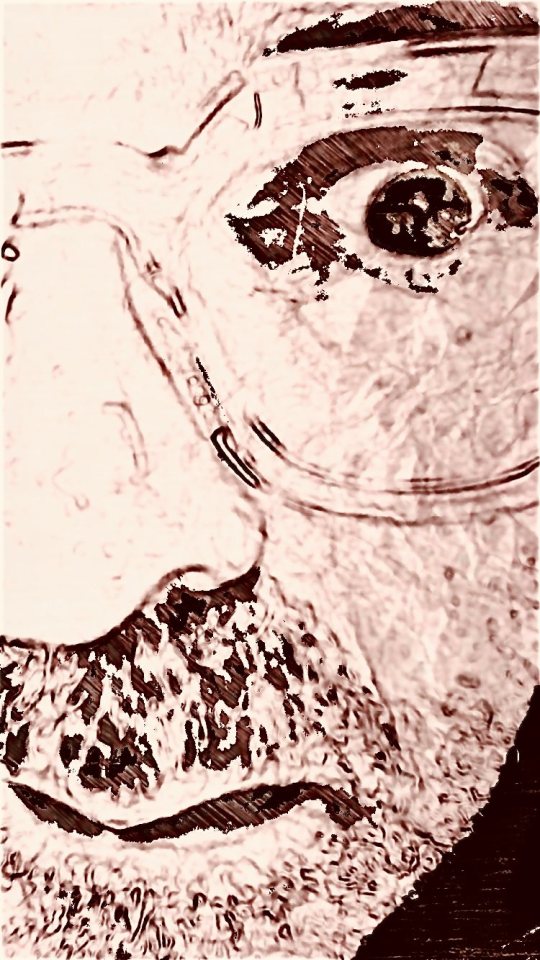
The standard is in the standard There is a realisation of my own maturing of course. I have far more interest in jazz than pop nowadays – and I mean that vast catalog of old jazz (not the new retro variety.) Still, I remain in thrall to the fabric of underground music that still excites me more than ever. The other side of the picture, if you like, and what feels to me like the place where most of the interesting stuff happens. The arty side of music without getting too pompous about it.
I can’t relate to any modern pop music – it’s the sound of anemic production to me. And ultimately that’s OK – I’m not the target audience and as the critical community looks for any crumb of subversion or excitement, perhaps in these ‘difficult times’ we can let that lie for now. Or should we be asking for more from our popstars? This has nothing to do with the awful authenticity, but all to do with attitude. And yes, secretly I still care about this.

Have we still got it? Ultimately, we could look back at that premise of what gave pop music its initial spark. Yes, I’m talking about talent. Not some taught talent but a natural instinctive talent that ultimately leads to something different. We should adjust our standards beyond the level of how good the social media campaign was for any given release. A lot of that great music is still out there, a whole subculture of interest lurking deeper down. Look behind the curtain that yielded the need for Taylor Swift to dip her toe into ‘mainstream indie’ and you might be surprised at what you find. Tunes, ideas and innovation. Someone hand Antti Tuisku the new Arca album and let’s really subvert it.
I’m still willing to back the artists where my jaw drops in wonder and I’m left with the feeling of ‘how I wish I could do that.’ That great lyric, that killer vocal, making the difference and bringing the emotion. As popular music fades into nostalgia for a better time, when supposed ‘real’ popstars and personalities walked the earth, perhaps we could just ask for more from our current crop – less of the plucking from behind the supermarket till and more of the alien, out of this world variety. Yes, I’m sure I sound like an old reactionary, but Pop, make me feel somethingagain.
Is my weariness – rather than old age – a reaction to the destructive capitalism that has reduced pop music to another tier on Jeff Bezos‘s consumerist Valhalla – this has ultimately destroyed the spirit and artfulness of pop music. Could it be that it’s not the fault of the individual stars or young kids coming up through their insta/tik-tok but the structural mould of capitalism which has sucked the air out of any outlandishness and commodified it.
0 notes
Text
One Quart Magazine Playlist: Bob Dylan and his 80th Dream

After all the cultural acknowledgment and blanket coverage, Nick Triani decides we need one more article celebrating Bob Dylan's 80th year. Eurovision Song Contest fever certainly was big in Finland this year. I didn’t watch it but after the event it was great to see so many people energised by the evening. Blind Channel and the thought of live music (sort of.) And hey, did you notice that ROCK music is back big time? Somehow reflecting the battle between analog and digital, the face-off between organic versus electronic music has been raging on in the background. Not having live music available for a long time has made the public thirsty for real performances and real musicians, whatever they are. My point? The pandemic has shifted the musical palette. Back catalog is king and this often means music with a human touch, nostalgia for our perceived idea of popular music with feelings and emotions and ‘real’ instruments that we can all relate to. Cognitive music if you like. Even Billie Eilish is at it.
Bob Dylan and his 80th dream Simultaneous to the general shifting of the musical sands, the cultural icon Bob Dylan celebrated his 80th birthday earlier this week. If you want a great argument for the organic, you can’t get a better touchstone. He is the ultimate live-in-the-studio one-taker. Yes, he’s a mystery to most of us, but that’s simply part of his talent, keeping up that veil of mysticism. I often think it must be fun being Bob Dylan: everybody raves about you as you release increasingly opaque and old sounding music which sounds like it’s there simply to please Dylan himself. Can’t say I’ve cared so much for Bob over the last 20 odd years. That doesn’t mean he isn’t one of my all time faves or hasn’t released some gems recently, just less frequently and it’s maybe not as exciting to me as that groovy music of his past.

I love Dylan’s 1960s stuff and the kitsch country-Bob who sings in a funny voice that came after that. The groovy Dylan who just looked so good. I could in reality check out of Bob around 1978 and still be eternally happy to proclaim him the greatest. Who can argue with that? No one it seems as everybody loves Bob, even those that didn’t used to. He’s been around long enough that he’s now back in fashion. In recent times I’ve come to appreciate Bob’s sidekick Joan Baez a lot more. Not as much as I appreciate Judy Collins or Dory Previn, but almost as much. These people are and have been as great as Bob. No voices of a generation, but who wants to be that? Not Bob, he’s been running away from it ever since. And here’s the rub: the constant modern love for all things Dylan is as much an indication of the fading power of popular music as any other indicator. It’s in the withered voice and one-note harmonica. The deeper meaning of Dylan’s lyrics and the fact that pop has rarely been better than it was around 1966. Those are the depressing facts.

That being said, here is my “Deep” Dylan playlist. I’m sure you’re sick of these things by now and of the blanket Dylan coverage we’re living through. It’s the last days of patriarchy, a final hurrah. Perhaps this sheds some light on some other Dylan music if you’re not a connoisseur . I’ve left out most of The Hits and featured mainly album tracks and unreleased gems. The contrast between 60s & 70s Dylan and the lost Bob of the 1980s is stark (I couldn’t find anything from Knocked out Loadedthat sounded decent, though I love the song “Brownsville Girl”). So the playlist is top-loaded, but the more dignified tracks from the 1990s onwards are here. As is his late masterpiece “Murder Most Foul”. If we’re considering pop music as an artform that has greater meaning, then Dylan certainly acts as the lightning rod that delivers deeper understanding and serious themes. But that is perhaps putting too much meaning into what Dylan did. It could just be as Dylan told Baez in the bizarre home-movie Renaldo and Clara: “That’s what thought has to do with it, thought will fuck you up.”
1 note
·
View note
Text
OQM Playlist: Life during quarantine #19

With another Life during quarantine playlist, Nick Triani discusses the wearing of face masks.
To wear or not to wear It’s amazing how history repeats itself. This isn’t the first time that confusion has arisen as to the appropriateness of mask wearing. As Christine Hauser reported in the New York Times this week, when the 1918 flu pandemic raged through the USA, masks were “…called muzzles, germ shields and dirt traps. They gave people a “pig-like snout.” Some people snipped holes in their masks to smoke cigars. Others fastened them to dogs in mockery. Bandits used them to rob banks.”
Reading on through Hauser’s article, the parallels with opposition to mask wearing in 2020 are ridiculously familiar. They even had an anti-mask wearing league back in the day. Of course, the effectiveness of those masks from 1918 are hard to gauge. We do know in 2020 of the 19 countries that have made the wearing of masks in public compulsory over the last month, the spreading of coronavirus has fallen by 40% compared to those countries that haven’t introduced mask wearing as a rule.

Cautious is best But vanity sure is strange. Of course we know this is why Donald Trump wouldn’t wear a mask at first – it was an affront to his virility and manhood. It took the US President over a hundred thousand deaths of the people he leads before he realised mask wearing may save lives.
And what do we make of those Finns returning from holidays abroad and refusing to be tested for Covid-19 on arrival at the airport? I wonder what level of dumb and dumber we’re at. They probably also refuse to wear a mask in public (and let’s not even expect a period of quarantine like their supposed to from these people.) The last peak of the virus back in spring came from those returning from abroad by the way (doh!)
It’s the classic couldn’t-happen-to-me syndrome. Well guess what? Shit happens. There is a hope against hope that the lockdown is permanently over and the old normal is around the corner. For that to happen, we need that collective responsibility that was so admirable up to a month or so ago. Wash your hands, social distance and wear a mask. It’s not too much of a sacrifice when lives and livelihoods are at stake. We’re living it large right now one could say, making the most of the limited impact at this time of coronavirus on Finnish shores. At least in comparison to the rest of Western civilization.
The masked avenger Perhaps this is where we need our imaginations. As I’ve noticed this past week, my family and I are the only people wearing masks in our local supermarket. We are amongst a select few on public transport wearing masks. This means we’re sparing people from our germs, but we’re not being spared from theirs.
But I can use my new found mask wearing anonymity to also play out my superhero fantasies. This mask wearing disguises much; most of my features and my expression thus muting my conversation. The mask also, might, just save my life and yours.
1 note
·
View note
Text
OQM Playlist : Life during quarantine #8

Ian Curtis by Karstein Volle Nick Triani presents another quarantine playlist while looking back at his own experience with the band Joy Division and their singer Ian Curtis, who died 40 years ago this week Covid-19 has more than any recent time given a new perspective of our pasts, a new way of appreciating what has come before in freer times. 40 years is a long time in anyone’s life. For me it’s that long since I fully immersed myself into post-punk and a counter culture that remains all consuming. My professional and personal careers have entwined – I’ve been in a position where my main interest in life, music, has also been my main vocation. That sure is privileged, but counter to this I certainly don’t take being ‘in’ music for granted and never will. It’s a fickle passion for sure and my own ups and downs have taught me much.

1980 marks an extra special coming of age for me personally. The signs were there earlier of course. By the time I was 13 in 1979, I’d met a bunch of like-minded souls in the school playground. Fans of John Peel, Two Tone Records, The Jam, the music weeklies and punk culture in general. We would all go on to form bands and play music together. We had one thing in common, we were different from other kids – we were non-conformists, weird and quirky, opinions formed by the music we revelled in.
It was a time when the musical obsession got deeper and more relevant to my own teenage experience. This bout of personal nostalgia for events long gone is brought on by the almost universal media coverage of the 40th anniversary of Ian Curtis‘s death, which was everywhere this past Monday (May 18th 2020). It felt strange to witness to be honest and highlighted what a commercial endeavor Joy Divisionhave become over the years, confirmed in recent times with duvet covers and Converse trainers adorned with their Unknown Pleasures album artwork. Through all the eulogies and critical consensus the Joy Division story has accrued over time there has been an element of that storytelling normalising Joy Division and Curtis.

It’s not really how I remember it as a 14-year-old looking for answers in my bedroom all those years ago. Curtis’ lyrics certainly fuelled my teen angst with tales of the macabre or of a dystopian Thatcher-inspired British landscape. But more tellingly Curtis’ lyrics always deflected back to his own personal struggles. This personal lyrical perspective cut through the unconventional sound of the band and to some degree humanized the Joy Division experience.
Joy Division were genuinely strange sounding – like nothing that came before or since. No one had written lyrics like Curtis, so bleak and dark yet so prescient. But even more, producer Martin Hannett managed to reinvent a sound with the basic three piece ingredients of rock n roll; drums, bass and guitar. No reinvention of those basic elements has been so startling or effective since.

Joy Division’s music is cold and can be hard work in its most daring experiments. Hannett is no stranger to visiting the finite no-go areas of the effect palette. Align the unconventional production to Stephen Morris‘s original, yet unusual drum patterns, Peter Hook‘s unique bass strumming and Bernard Sumner‘s opaque guitar shapes and Joy Division sound alien at core. You only have to hear the effects Hannett would adorn Curtis’ voice with, that voice would suffer from a use of obfuscate effects, which merely made the listener dig deeper to engage and connect whilst similarly being held at arm’s length. In most cases, Joy Division’s music is considerably uncommercial and abnormal; this is music that asks a lot of the listener.
There was also the sense of mystery surrounding the band. The lack of credits, the elegiac and beautiful artwork designs of Peter Saville that perfectly complemented the music. Kevin Cummins original iconic monochrome photography, which accentuated the 1940s charity store attire the band sported. No one else dressed like this at the time. Reading Paul Morley‘s deep analysis of the band back in the day embellished what would become the mythical, but also, thankfully, failed to reveal too much. However much the past 40 years has stripped away at the heart of Joy Division, the music has withstood scrutiny. The music remains unaffected and still frozen in some ‘all future music will sound like this one day’ bubble. You can try and convince everyone that it was four young daft lads from Salford making this strange music, but you still can’t shatter that veneer of weirdness that Joy Division’s music delivers.
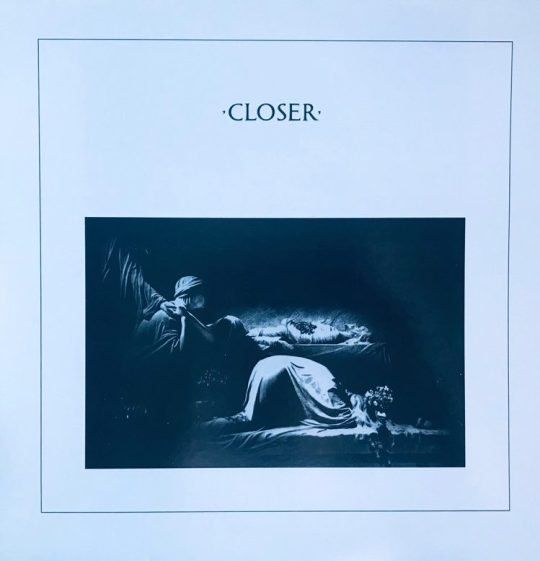
Closer was the album I indulged with the most in 1980 – a record that remains strangely dignified to the events surrounding its release. Like any of the previous Joy Division releases, Closer represented another step forward and evolution in sound – but this time with an extra layer of dark, personal insight, combined with the added benefit of a heavy hindsight. I got lost in this album.
Joy Division are an antithesis of the 2020 know-all and reveal-all of popular culture. Acknowledging this merely enhances a feeling of cognitive dissonance of how the band have been embraced by a mainstream audience. This week people were personalizing their own experiences with Joy Division lyrics on social media. I’ve also seen a man wearing a Joy Division t-shirt in my local supermarket in Helsinki. Tragedy creates special intrigue and draws people in. For me Joy Division represent that point in time where we got a new dose of cultural weirdness, a cold abstract and beautiful thing representing something we’d never really considered before: dissociative popular music that goes to the dark heart of who we really are.
1 note
·
View note
Text
OQM Playlist: Life during quarantine #21

With this week's Life during quarantine playlist Nick Triani discusses changing attitudes and gender equality at the record label Soliti
TOXIC As I often keep finding out nowadays, my expectations toward others lead to disappointment. A recent narrative on a friend’s facebook feed was a case in point: a conversation between mostly middle-aged white men about music soon descended into a mansplaining marathon and victim blaming indignation. It was the classic “I respect #MeToo, but...” scenario.
A newish strand of internet rage can now go under the label of ‘music gender tribalism’. My own comments were pretty aggressive too (I’m not proud of it), but when having to condemn racist attitudes and sexism one has to be forceful. You can’t let these things slip, whoever you’re talking to, as in the past I regretfully often have.
Change has been extensive in the way we talk in recent years. Since the beginning of #MeToo and Black Lives Matter, discussion has begun of the need for more equality in general terms, between genders (in all their varieties) and so-called races. This has led to feminist cultural analysis infiltrating the mainstream. The rise of movements like Black Lives Matter and an awareness of Trans issues are now part of our everyday discussion. For certain white middle aged, right-onish men these issues have induced a privileged response and a resistive attitude to change. Those men who don’t like this new world order, feel the previously unheard voices challenge their cosy, middle class superiority, and threaten their position – a world where their opinions are always on the right side of the patriarchal canon.

TRYING TO LEVEL IT UP And how am I any different? I’m not really. And what the hell am I actually doing to make a difference? After all, here I am every week shoving my musical taste down your throats and extolling the virtues of my own favourite music, the ultimate in middle-aged mansplaining.
I’m trying. It’s small steps. My partner has had almost 20 years to inform me and show me the juvenile tendency of my errant ways. It’s been the most enlightened and open time of my life. Acceptance to new ideas not born out of the learned gender norms. But here’s what made the difference: I’ve been willing to listen and understand, to try on new shoes and take on new perspectives not usually associated with my gender. I have been forced to.
I’ve tried to make a difference through channels I can influence. I decided a few years ago to address the gender imbalance amongst the roster on the record label I A+R and generally take care of, Soliti. The label made its name initially (especially internationally), with a bunch of white boy guitar bands playing various alternatives of indie music. Of course there were exceptions, but in general terms, the label was a very male dominated exercise and this was something that really began to bother me, especially as ideology-wise, things were moving on from such simplistic gender distinctions, even within some areas of the music industry (though not so much in Finland). It’s important to point out that I still stand by and love all the music the label released at that time.
Over the last five years or so the gender balance at the label has evened up, so much so that by the time this year came round, nine years later, we finally have a gender equal roster representing more than cis and hetero communities. Of course no one really knew the intention here, but it has been quite a deliberate move to have a gender equal label roster. This new equality has manifested itself with the realisation that overall, I prefer working with women.
On a more practical level, it’s been very difficult finding women artists that fit the aesthetic and musical direction of the label. But as has naturally happened, the label has changed (thankfully) – and it now feels like a broader church for musical styles – of course all under the independent aesthetic that Soliti has established itself under. That change is attributable to the women who have released music for the label. And yes, balance is still present, as Soliti still releases white boy indie guitar music too.
Next, I would love to sign BAME artists to the label. Please, send me music!
Find out more on Soliti
1 note
·
View note
Text
OQM Playlist: Life during quarantine #20
With a new Life during quarantine playlist, Nick Triani focuses on football post-lockdown and the fortunes of his beloved Tottenham Hotspur
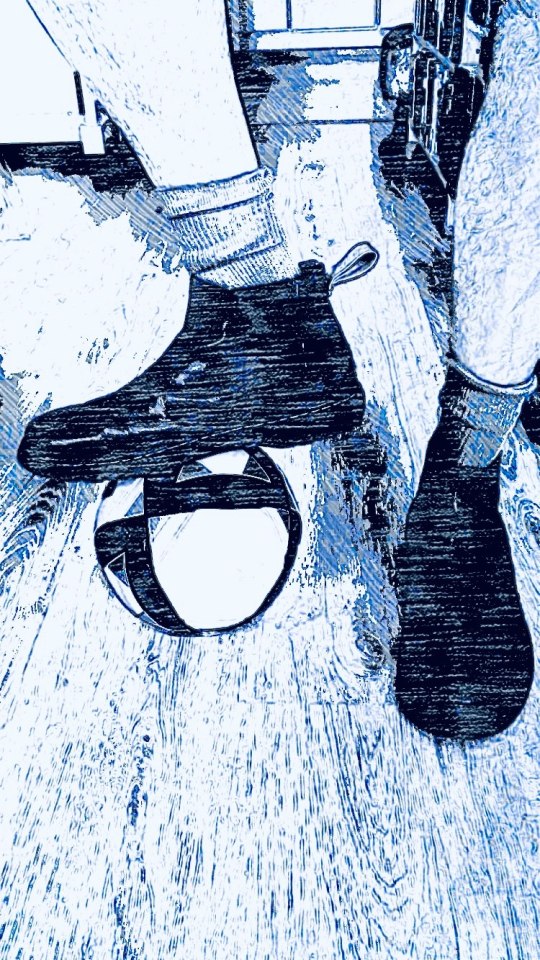
Very Spursy The day after Bayern Munich put Barcelona to the sword and ended the era of the superhero footballer, it feels like a great time to reflect not only on football in these Covid-19 times, but more specifically my own team Tottenham Hotspur. Anyone who knows me understands my obsession with football and Spurs. My partner commented recently that I was much nicer at home during lockdown without football and that once the Premier League resumed in July, my mood occasionally erred toward the darker, edgier side of things. It’s true, the fortunes of my chosen team has a profound effect on me and the never ending 2019/20 season has been especially tumultuous for Spurs supporters in general. Yesterday, Amazon released the full trailer for All or Nothing: Tottenham Hotspur, a forthcoming warts and all behind the scenes TV series that looks at the football club over the last 12 months. And what a period that has been in the club’s history. Merely 12 months ago Spurs played in their first Champions League final, a pinnacle for the club on the world stage and for me as a lifelong supporter. Of course, in typical fashion, despite the heroics to reach the final, Spurs were very tepid in a drab match and lost to a great (but not great on the night ) Liverpoolteam.
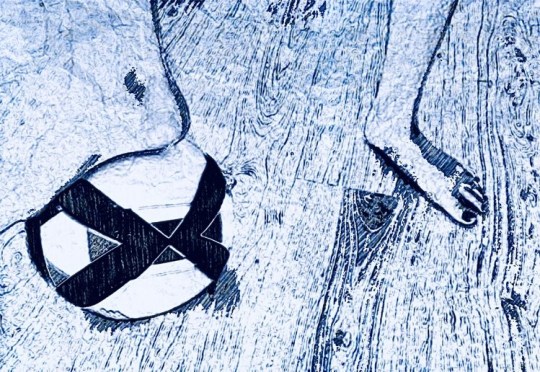
Everything is broken In his five and a half years at the club former coach Mauricio Pochettino had transformed Tottenham from an occasionally sparkling team to a contender that played a modern version of the football association with a youthful and skillful squad. Our biggest rivals ARSEnal football club were looking jaded after years of domination over us. Plus Poch, as he became affectionately known by the fans, as well as being a prime team motivator, was a little sexy and showed real emotionwhich endeared him to us even more.
At the beginning of the 2019/20 season, after years of overachieving results with relatively small means, the results went North and our best coach of the modern era went North too. Enter stage left one of the most divisive football coaches of the modern era (and also one of the most successful in football history); José Mourinho. The former special one (nowadays dubbed the toxic one and much despised by the football community at large), initially brought pragmatic football followed by injury hit football and then, once football returned, a mostly successful counter attacking football which gives some hope for next season (only four weeks away people.)
I don’t mind José. Yes, he most certainly is a wind-up merchant, and if a pundit calls him a proven winner again, I swear I’ll…But he’s also an appalling human being masquerading as a slice of post-modern entertainment (which makes him fascinating in a way). The football he coaches can certainly be depressing and negative (shit on a stick), but that overused description of Mourinho being a star, works. He is rarely dull in conversation and doesn’t play the good guy. He’s the anti-Jürgen Klopp, the Dark Prince of football who lacks scruples and even some kind of heart (but still has lots of heart). Compared to the wet soggy abandoned dishcloth of Barcelona coach Quique Setién, Mourinho is electric. I’ll take him whilst he lasts.
Help me if you can But here is the rub: despite the precautions taken with a deadly pandemic involved and my own personal selfish joy at watching 22 grown men kicking a ball around an empty stadium, football’s restart post-lockdown does smack of the general contentious greed that afflicts society right now. The human race has gradually come round to thinking we can live with the pandemic and fuck the consequences. Capitalism is winning the safety argument and I wonder what world we’re leaving behind for my young children. Environmental concerns seem to be eternally on the backburner whilst we work out a way to abide by the virus and just live. Football, in its acquiescence to supply ‘entertainment’ to pander to nostalgic pangs of normality, doesn’t need to worry about losing its soul (that was lost decades ago). The rest of us who follow our multi-million teams are the ones I’m worried about. At what time do I start to feel disgusted by all this?
1 note
·
View note
Text

OQM Playlist: Life during quarantine #4 A new life during quarantine playlist reminds Nick Triani of first encounters with Roberta Flack's music whilst a DJ in Belgrade To quote Ian Curtis, “Where will it end? Where will it end?” No one knows Ian. Our disciplined homestay goes on. That silent trust that seems so apparent amongst the Nordic countries, doesn’t exist elsewhere. That faith repays itself with people in general terms sticking to agreed plans. Still, a certain twitchy feeling is arising. Should we start to relax about COVID-19? Or should we keep up the restraint that keeps us safe?

Roberta Flack‘s First Take album, an unacknowledged masterpiece from the end of the 1960’s finally gets the deluxe reissue treatment and a welcome boost to its rather ignored standing. I open this week’s playlist with a new bonus cut from the album that offers an indication of the quality throughout. I first encountered First Takealmost 30 years ago, when I was a DJ in the former Yugoslavia at a Belgrade-based radio station Marketing Union. I arrived in Belgrade from England just as the sanctions from the UN kicked in.
As the war between Yugoslavia and Croatian forces raged, Yugoslavia was seen as the aggressor of the conflict. Looking from the outside, this may have seemed the case – the reality on the streets of Belgrade was rather different. Refugees from war torn parts of the country were flooding into the city. There was a sense of danger, a squalid aesthetic, political unrest, a dictatorial presence whilst anti-war feeling was riding high. After all these years I still can’t understand two things: what was I, a 25-year-old doing in Belgrade in 1992? And why, what is now known as the Croatian War of Independence, was tolerated by the people on both sides of the conflict? It was a family affair, with many people in Belgrade having cousins, brothers, grandparents and other family members on both sides of the divide. Blood was running thicker than usual.
I was paid handsomely for my DJ job, with packages of cash left for me monthly in a shady café. Near my first hotel, there was a street market and an excellent record stand. That’s where I found Roberta’s First Take. I was doing long stints on the radio and although the company that employed me were sending me new music (often unavailable in Belgrade due to those sanctions), I still needed more. So I became a regular customer at the market.
After many months, leaving Belgrade proved difficult. I was depressed by the war and its effects. I was also feeling mercenary. It was hard to justify my existence when so much hardship was around me. A stand-off for some weeks due to my expired passport delayed the stamping of my documents. Suspicious authorities ultimately relented which led to a scary train ride via Hungary that got me to Austria and a plane back to England. To travel light, I’d discarded much of the records accumulated during my time in Belgrade, but Roberta’s First Take made the trip home and has accompanied me ever since.
#OQM#life during quarantine#one quart magazine#nick triani#playlist#Robert flack#politics#roberta flack
1 note
·
View note
Text
OQM Playlist: Life during quarantine #25

Nick Triani after Riitta Supperi With the latest Life during quarantine playlist, Nick Triani celebrates the return of Janne Lehtinen and his musical project Mummypowder
The comeback This week saw the return of Mummypowder, Janne Lehtinen‘s vehicle for delivering his passionate and melodic music. For me, Janne is as good as songwriting gets, at least as far as ‘man with a guitar and a bunch of other instruments’ go. On this week’s playlist you’ll find ‘Sara’s Song’, typical of all the attributes that set Janne apart from the rest.
My musical relationship with Janne runs deep. He’s played with me in various projects I’ve concocted over the years, his versatility apparent with him playing drums in one project and bass in another, whilst always adding angelic backing vocals on any given tune. Mummypowder’s debut album, The Heavyweight Champions, was the first record I produced in Finland in 1998. Janne was in fact the first person (not counting my then partner) I met on arriving in Finland. He watched me unpack. I quickly got the Mummypowder album gig after that meeting.
A sawmill at -25 celcius I think it’s been recounted on a few occasions how I met Aleksi Pahkala in Austin Texas at the South By Southwest festival in 1998, six months before I moved to Finland. It was a chance meeting, I’d missed my plane from Houston to Austin and arrived by Greyhound bus many hours later. It was nighttime and I was walking down a crowded Sixth Street. This person who I didn’t know was filming me and said he was from a Swedish TV channel. He told me to check his band Mummypowder playing the following night. I did. Aleksi was that cameraman.
Due to the chance encounter, a Mummypowder CD was unpacked six months later in an apartment in Helsinki and a few months after that I decamped with the band to a recording studio in Jokela. Or that’s what I was told it was. In fact, it was a space with a few rooms off it in a warehouse building. There was a mixing desk, some mikes and other random recording paraphernalia. The biggest problem was that the neighbouring space was a sawmill. The ‘control room’ (I use the term loosely), was separated from said sawmill with black bin bags as the dividing wall. That high pitched sound of saw cutting through timbre is audible on the album.
That winter was the coldest I’ve experienced in my many years living in Finland, temperatures going as low as -25 or -30 celcius. I’d just moved to Finland, and although extremely cold weather was a novel experience, I hadn’t quite expected the atmospheric pressure to induce pain. There was no central heating in the concrete space where we were recording. You could see your breath as you spoke, hanging like vapour clouds in the studio. The fingers of the band members quickly became frozen icicles as they tried to play their instruments. We did try playing guitars with gloves on, but it wasn’t happening.
The sight of me sitting at the mixing desk in a sleeping bag, wooly hat and gloves on was regular. It was an ice cave. I was told by the label guy it was “the best studio in Finland”. I was worried. If this was the best studio in Finland, I’d hate to think what the worst was. I’d have to seriously reconsider what I was going to do if these were the kinds of environments for making recorded music in my new home.
Somehow we persevered. It went on for a few months. Me and Janne mixed the record together in the same freezing space. Microwave pizzas were the diet and cold coffee the beverages. Everything was freezing. We listened to Elliott Smith‘s Either/Or, Love‘s Forever Changes, REM‘s Monster for reference. We only had a soundcraft desk, a quadraverb and a compressor as our mixing tools (some would say what else do you need?). The snare drum had serious hi-hat spill that caused consternation. I blamed the open hi-hat used heavily on The Posies Frosting On The Beater album (another reference.) Still, we survived.
Don’t let me be misunderstood When the album was released in 1999, it was relatively well received. Some people didn’t get the fucked up sound, extreme panning, low vocal mix, a plethora of distorted sounds and liberal use of the most extreme quadraverb soundscapes. What people did get was Janne’s undeniably great songwriting. However much we experimented with sound, the songs were tough enough to take it. I loved the relaxed and loose playing performance from the band (my favourite Mummypowder lineup), incredible considering the recording conditions. I still remain fond and proud of that record, and listening to the songs as I write this, I can attest to it still sounding fresh in 2020.
Aleksi became my best buddy. Janne too. Those first relationships have endured. Both Janne and Aleksi have been there for me on so many levels and so many times. Personally, it adds extra importance to what we did when we made that album together. Those were special times that created special bonds. Aleksi is now releasing Mummypowder on his new label All That Plazz. Full circle.
0 notes
Text
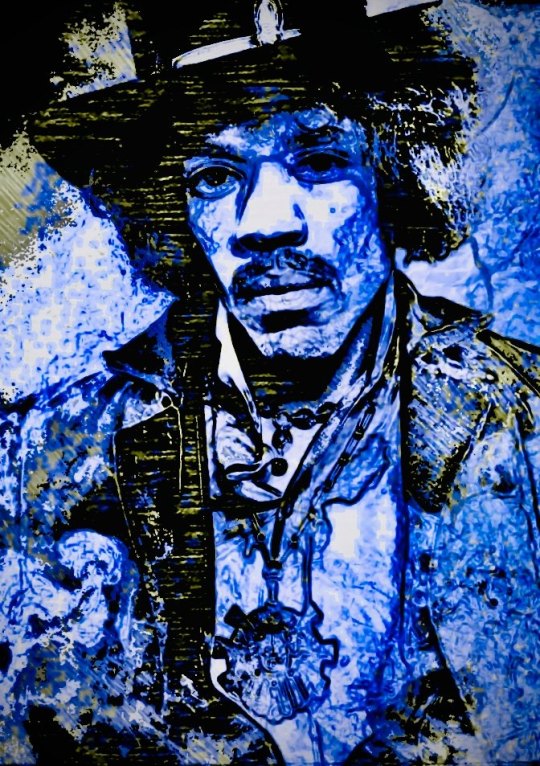
OQM Playlist: Life during quarantine #23 A new Life during quarantine playlist finds Nick Triani writing about the legacy and influence of Jimi Hendrix.A new Life during quarantine playlist finds Nick Triani writing about the legacy and influence of Jimi Hendrix.
Jimi Jimi Random thoughts. On Friday I woke up after dreaming of Jimi Hendrix, specifically a Hendrix movie. I realised I had the same feeling watching John Ridley‘s weak Jimi Henrdix biopic All Is by My Side as I did watching Oliver Stone‘s ludicrous yet entertaining The Doors movie. Both films managed to miss the essence of what made the two Jims, Hendrix and Morrison, so interesting. What a dream!
Any fascination in watching these movies comes from following the ensuing cinema car-crash unfold. At least Stone was brazenly over the top with obvious fake beards, shamanistic ideology and appropriation, off-kilter period detail and dollops of unnecessary nudity. Ridley’s film is way too dour and without being able to use any of Hendrix’s recorded music, ultimately misses the core of the attraction.
Of course, Hendrix’s standing is very strange in this post-modern era. Yes, it’s acknowledged he was the greatest rock guitarist ever, but much of the druggy, free-love ideology of Hendrix’s time seems woefully out of sync with 2020, therefore diminishing his influence. Allegations of domestic abuse haven’t helped the Hendrix mythology either, yet similar white artists accused of the same or worse seem to be unscathed by such history (Rolling Stones, Led Zeppelin, Bowie, Lennon etc). Even Hendrix’s Fender Strat guitar tone seems to be out of vogue.
And that’s the thing to remember, outside of Arthur Lee, Hendrix was the sole black rock icon of the 1960’s boom. Stories about his extraordinary large hands, troubled family background, breaking into the London live scene, that onstage showdown with The Who, the hour-long anguish of noise he performed live the night of Martin Luther King‘s murder, being the highest paid live performer of the late 1960s, Hendrix standing as one of the greatest musicians of the 20th century, seem to be an afterthought. Then there’s the records.
‘Driving South,’ a BBC session cut found on this week’s playlist should remind us that the gentle yet troubled soul of Henrdix could diminish the guitar opposition even with an off- the-cuff jam. Further out of context, Hendrix’s excellence opened up the premise of Black music to a white rock audience. You could surmise that Hendrix wasn’t the greatest songwriter, but again, that is a slur, there are many examples of great songwriting in his catalog. But his core musicality and main influence were the blues; the riff, the expression and that singular sadness. Hendrix remains the unquestioned and unrivalled king of making noise with an electric guitar, his expression still far ahead of the game.
4 notes
·
View notes
Text

One Quart Magazine Playlist: the year in music 2021 Nick Triani negotiates the overloaded release schedules to bring you a One Quart Magazine playlist of the favourite music he listened to during 2021.
It’s all too much Can we collectively hold our hands up and say 2021 has been the year where popular music’s proficiency has reached an all time high? Be it the pandemic and artists having too much time on their hands, with only a partial return to touring already being curtailed, creativity has been booming across the musical genres.
Initially I felt that 2021 was a year where I simply lost touch with what was going on – merely being content to keep abreast of the music I was working with was seemingly enough to satiate my music consumption. But with Spotify recently admitting to uploading 60 thousand songs a day, it’s obvious that a saturation of releases has created a feeling in me of being totally overwhelmed by music. It wasn’t until I compiled this playlist of my favourite music of the year that I realised I’d enjoyed so much new music. The pull of nostalgia has been heavy over the last 12 months, with even ABBAmaking the most newsworthy of comebacks. With no sound or genre dominating the year, it really felt like a year of stagnation for pop culture, especially in the more mainstream echelons. But if you looked closely, the margins, thankfully, showed signs of creative life.
And the winner is My favourite single of the year was Self Esteem’s ‘I Do This All The Time.’ Frank, funny and honest, Rebecca Lucy Taylor’s lyrics framed the narrative heavy album Prioritise Pleasure – a record that was completely ignored in Finland (despite a strong international presence.)
Low’s Hey What album stood out for me – expanding the sound palette of their previous game changer album Double Negative, Alan Sparhawk and Mimi Parkermade more space for noise, gospel tinges, social commentary and ambience on their new album. Hey What endured as the year rolled on.
Re-issues have gathered momentum with the return to popularity of vinyl with anniversary releases being celebrated with the same gusto as new albums. The record I listened to the most this year was The Beach Boys Feel Flows collection – covering seminal albums Wildflower and Surf’s Up. The reissue captures the emergence of Dennis Wilson as songwriter and the waking up of Brian Wilson to create Beach Boys music as potent as their standard for all times, Pet Sounds.
The Beatles ‘Get Back’ was astonishingly the most discussed musical happening of the year, which merely confirms how enthral to nostalgia popular music has become. Still, Peter Jackson’s documentary not only showed us a bunch of ridiculously talented songwriters struggling wearily with their ‘celebratory status’ whilst being Beatles, ‘Get Back’ possibly destroyed the traditional talking head, after the fact music documentary. ‘Get Back’ was a first hand visual document; often brutal, funny and at times brilliant (if a little overlong.) This OQM playlist reflects not only some of my favourite new releases of the year, but some of those re-issues of 2021 I enjoyed along with other music I obsessed over (Brazilian music of the early 1970s, French Psych-pop of the 1960s, Jazz piano players, folk music of the 1960/70s.) I realised that 2021 was a year I ended up listening to a wider variety of styles than ever before as well as a deeper volume of music. Mass music output really did result in my own mass music consumption.
Listen to the playlist!
0 notes
Text
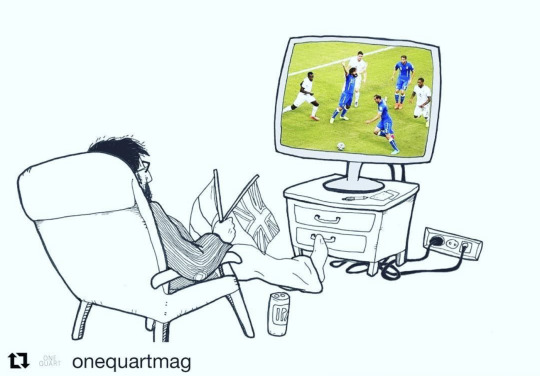
Fever dreams: the nearly man of Euro 2016 For the past month, Nick Triani has lived every moment of Euro 2016 in a fever dream of football nirvana. For the past month, Nick Triani has lived every moment of Euro 2016 in a fever dream of football nirvana.
The Fan I have to resign myself to defeat. Not a personal defeat you understand. This is far more primitive than that. More tribal. Over the last four weeks of rollercoaster rides, I’ve used my Facebook feed as a journal to document my match day concerns, predictions and general comments on Euro 2016. My rarely seen bravado is often found in all its brazen arrogance on this feed. My confidence oozes forth until the crash comes – and yes this year it did come – a double implosion. One was a ‘caught with your pants down’ realization that football may never again reign over the Queen‘s closest domain, at least not at an international level. The other exit was more respectable, and due to low expectation, almost taken as a victory in defeat. Supporting two teams at a major football event such as this is not so good for the old fingernails.
What I do notice when something like the Euros is on, is a new level of stereotyping – and not just within the broader media. Friends via social media suggest Italiansare all cheats. Some other proclaim that Italy are also so defensive and anti-football. They don’t recognize the art of a Bonucci or a Chiellini. These defenders even have Renaissance names for crying out loud. Of course, all English fans are beered up hooligans, and so this goes on. But the casual stereotyping doesn’t just affect me. Control is slightly lost and people choose their sides. In a country like Finland this means the approach tends to be from a neutral perspective. But still, temperatures rise.
The Italian coach Antonio Conte was the star of this competition. Animated to extremes, you’d want some of what he’s on. Often more interesting than the football on display (Italy vs Sweden?), Conte supplied the box office off camera too, with a series of interviews that showed his way with words could only be described as poetic and philosophical. Compare this to earnest Roy Hodgson, a laymen on the highest salary, trying to convince us that his lieutenant Wayne Rooney is the new Andrea Pirlo (surely Pirlo has never been more insulted). Hodgson’s ordinary, resigned demeanor offers enough reason why a team of talented players, let alone a nation, could never entertain the notion of England winning the bloody competition.
But since Conte (and Italy) left the competition, it all fell a bit flat for me (of course, I’m biased). The Icelandic defeat by France just confirmed it. Yes, Wales kept me dreaming of the underdog for a bit longer. On a managerial level, Didier Deschamps anyone? The everyman Chris Coleman? Or how about Joachim Löwand his amazing scratch and sniff testicles? Conte is in a class of his own in the personality stakes. With his perma-tanned sidekick, brother Gianluca, you could easily imagine these two fronting an Italian Bon Jovi tribute act. There was something of the spandex variety going on. The Football I’ve watched a lot of the games – perhaps 80%. That’s a lot of football. What differentiates the experience is how my own mind and body behave when watching say England and Italy, compared to anyone else. When ‘my’ teams are playing, I become tense, unavailable, rude, a coil ready to unleash a stream of expletive bile into this known universe. There is confidence of course, but that threat of the ultimate disappointment, that crushing inevitability of knowing this unreasonable feeling, this taking part and being a part of, could end any moment – it’s actually impossible to put into words.
The England team were half of the Tottenham team this year (the club team I’ve supported all my life), so I had extra interest in how England got on. Eric Dierbecame my new god. After his no-nonsense season with Spurs, a man-crush ensued. Falling ill against Iceland was his only serious blot on a very blotchy English landscape. Harry Kane was a disaster. As were all England’s strikers if we’re honest. Kane got the brunt of the striker hate, once England got eliminated. Hodgson couldn’t accommodate a system that could release the considerable goal threat Kane, Daniel Sturridge and James Vardy posses. Raheem Sterling, along with Jack Wilshere (and to a lesser degree Jordan Henderson) should have stayed in England, so out of form and unfit these players proved to be. Hodgson stuck by his talisman Wayne Rooney, who often looked off the pace. The English media fawned at Rooney’s early midfield exploits, but he was average at best, as were England. Hodgson displayed much loyalty at this tournament, it was misplaced and cost him his job. The new, incoming England coach has the bones of a good squad. Some tactics of any form should bring better form and signs of progress.
But Euro 2016 didn’t only involve England’s self-subscribed Brexit. Zlatan said farewell: vulnerable, slow and humbled. Cristiano Ronaldo was strangely stiff (till Hungary) and then finally firing against Wales. Gareth Bale was a giant at times, but then uninvolved. Paul Pogba showed flashes. Thomas Muller was there in bodily form but in reality he was a real life ghost of his former self. Wayne Rooney played in midfield (ahem). Andrés Iniesta, still a class act, found himself surrounded by average, non motivated servants. The galactico football superstar has generally had a bad Euros, exemplified by Ronaldo’s injury in the final. None of these super footballers capturing the imagination like the Iceland team or even the showmanship of Conte. Of course there were exceptions: early tournament it was Dimitri Payet, then Antoine Griezmann came to life and has been the player at this Euros. Griezmann, like a dynamo whose duracell battery spluttered into life mid-tournament, has simply wanted it more than anyone else. France to me have not quite seemed the real deal. Their run to the final has in reality meant the French overturned Albania, Romania, Iceland, Republic Of Ireland, drew with Switzerland and then rather fortuitously beat their first real test – Germany. It was an enthralling semi-final, where the French were outplayed for large parts. But in this new football landscape, the French understood the new rules perfectly despite an overall lack of conviction. On the other hand, any team that can make the ‘looks like he’s treading water’ Olivier Giroud come across as an amazing, speedy goal scorer deserves some respect. The Euros has prescribed a new form of football entertainment that surely reflects the worldwide game at these times. This has been a tournament dominated by teamwork and pragmatic application. Very few goal fests or easy wins were clocked up – instead we viewed many tight and tense affairs, where the overall standard and technique on display has been more than competent. From Albania to Hungary, Poland to Iceland and Wales, these teams all played a very disciplined game. Tactically versed. Play deep, counter attack with genuine speed. Possession was for the ancients. This made most games close. Moments of explosiveness – Ronaldo’s in air backheel, Luka Modric‘s bullet voley, Emanuele Giaccherini‘s amazing first touch against Belgium, Griezmann in general. Then there was England and Russia, two teams without a plan A or B. Slovakia came close to matching their depths. Note to the English media: there are no easy games anymore in international football. The defeat to Iceland was not humiliating. It was just the natural order of things.
Mothman Prophecies Someone left the lights on all night and the moths came to roost. There was a ‘day of the locusts’ type of dread surrounding the final. Ronaldo, felled by Payet rather innocuously, left the field injured after 20 odd minutes. There were tears. If the football didn’t quite ignite, surreal qualities certainly did. France, after a positive opening 10 minutes, stuttered and spluttered. Portugal lost their star, but their formation looked more solid. Ronaldo’s injury left the contest pretty redundant for 90 minutes. But Portugal came alive in extra-time whilst France floundered in a tired heap. Again, Portugal recalled the virtue of patience, whilst Pepe, much to a general annoyance, was excellent here. Eder, the player unable to score for and unwanted by Swansea, struck a glorious winner. The final was a disappointment. But this tournament did much for France after a dark period of national history. In the end, the tears turned to smiles as Ronaldo got one over on his biggest rival by lifting an international trophy.
Highs Highlights were many: Zaza memes lead the way. Ronaldo’s preening self-love and over the top poses, mic throwing, Iceland blasting behaviour was fun. Conte’s expression. Pogba’s confidence and a pretty good standard of no-fuss refereeing – apart from that penalty! Hodgson resigns. That Robson-Kanu goal. Pelle’s hair. The self-obsessed tika-taka fanboys retreating further into their caves. The Icelandic chant ringing round stadiums. The great atmosphere that even translated to jubilance through my laptop headset. The fans, as always.
Lows Gianluigi Buffon‘s tears and Joe Hart‘s tunnel swearing and slow dives. The camera angles for offside decisions – plus the overhead camera shot for a third of the Germany vs Italy match. The reemergence of hooliganism, English and Russian fans running amok in France. There was much comment suggesting England fans were blameless. The taunting of refugee children by some of those English fans will stay with me for a long time. And despite not having those expectations, Italy getting such a tough route to the final despite topping their group: Spain, Germany and it would have been France. FFS, how did that happen? England disappointing again, the promise of youthful exuberance wasted. Harry Kane’s soul was lost at the Euros. And somewhere, with that loss, my own mortality swings into the frame. At fifty years of age, how many of these tournaments do I have in me? Five or six with some luck maybe? It’s too little. That makes me sad.
Team Of the Tournament Lloris Chester Bonucci Chiellini Bale Ramsey Modric Kante Payet Ronaldo Griezmann
Subs: Buffon, Walker, Dier, Pepe, Di Rossi, Williams, Pogba, Lukaku, Konchinsky, Iniesta, Renato Sanches
Games of the Tournament: Italy 2-0 Belgium, Czech Republic 2-2 Croatia, Croatia 2-1 Spain, Hungary 3-3 Portugal, Switzerland 1-1 Poland, Italy 2-0 Spain, England 1-2 Iceland, Poland 1-1 Portugal (first half), Wales 2-1 Belgium, Germany 1-1 Italy (penalty shoot out only), Germany 0-2 France.
Goal of the TournamentRonaldo back heel vs Hungary
Player of the Tournament: Antoine Griezmann.
1 note
·
View note
Text
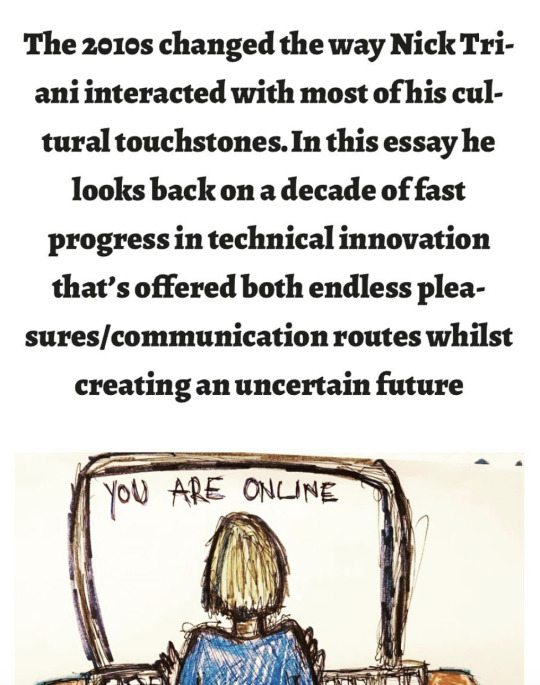
WHO KNOWS WHERE THE TIME GOES? Fast Forward/Rewind As the decade draws to a close, many are trying to fathom what just happened over the last ten years. Be it cultural, political or the climate catastrophe that most conscientious types realise they find themselves in, the past decade might be remembered as an introduction to what may be our most challenging times here on earth. In layman’s terms – we are in the midst of a climate emergency. As The Clash once warned – the ice caps are melting at an alarming rate, the planet’s heating up – and we’re not doing enough to stop it.
The diagnosis is critical, yet most of western privileged society just shrugs with an uninterested uneasiness born out of a selfless need for non-reflection, a simmering vacuousness of staring into the void and merely asking “isn’t there anything good on Netflix I could watch so I don’t have to face this reality?” The need for escape is exemplified by our own immersion into the internet and the virtual pleasure or pain that belongs to someone else.
My main take-away from the last decade could be about screen addiction, at least in the sense of what I can see from my own environment. This particularly relates to me being a culture junkie and most of the culture I obsess over has moved online. Over the last ten years I simply haven’t been able to get enough of that light, those words, that browse, the fear of missing out on the latest tweet, FB update, email, news headlines and of course, the biggest attraction: my own virtual social engagement. So many of us have become the arbitrators not only of our own cultural worlds, but political opinion combined with a great capacity for trolling and nastiness. The internet is an outlaw land and creates its own web (ouch!) of intrigue, opinion, controversy or simply bat-shit craziness. It’s this wild cacophony of noise that keeps us hooked, a place where YOU can have a voice (even if no one is really listening). Yes, I’m hooked (though increasingly growing weary.)
Boomtime is over As the decade ends social media as a time consuming phenomenon wanes for me, while at the same time I am aware that the internet has become a routine part of nearly every aspect of my life. I have a peace of mind now that I don’t stress if I haven’t posted anything on one of my many social media platforms. Social media’s decade-long sprint to offer a consumerist paradise has merely hastened my move for the shutdown button. I prefer to live in the moment now rather than documenting that moment. Ironically, the fast sprint of social connectivity has made me more remote and less willing to share and connect.
Of course, as I get older and the looks fade and certainly as regards a platform such as Instagram, I have become less comfortable in my own skin, a development I don’t really feel like sharing with the world. Did anyone ever mention the visual vanities of older lives? They should, it’s a heartbreaker. More vivid pursuits inform me nowadays. Time spent with my family have become the best of times, though my family will probably attest to me being still addicted to screens. I have no particular vice or drug habit, I eat healthily and don’t really drink, I’m proud of my clear-headed sobriety. I merely spend time with the things that interest me most. This is the privileged life of a white-passing +50 male. I have become extremely selfish with my time.
Calling it out A new development has seen a general consensus driven by public opinion becoming our barometer of what classifies as the word of the day. For me the past decade has seen standards become lowered to a simple classification of; “if enough people like something, then it must be good” (the reverse of this premise also applies). Mixing commercial revenues with quality of endeavour is something that has become heightened, at least in most MSM. It’s more escapism with an extra dose of dumbing down. Yes, an elitist view perhaps, but I won’t apologise for calling out something that is truly dreadful or politically odious, especially if that something’s only merit is being popular. We have accepted capitalism as high art or as our only aspiration. Popular opinions define critical consensus, yet if we lose the ability to take on or offer criticism, worryingly we lose our capacity to discuss or communicate. Despite our supposed hi-speed connectivity, I have finally come to the pessimistic conclusion that this past decade has been one long communication breakdown.
This sporting life As a fan of nearly 50 years, I can revel in Tottenham Hotspur’s general improvement as a football team; it’s been a highlight of my decade – Spurs’ competitiveness. Football has become all-enveloping for me. I ignore the obvious, devious and evil commercial aspects of the beautiful game and give into my innate state of tribalism (I really never knew I had it in me.) Come match-day (which is ever frequent) my passion knows no bounds and I am lost in the increasingly intense revelry of the sport. Yes, football has become more intense, the pressure often unbearable; the increased speed of each game, the superstars, the global reach all entwine in my mind to create the perfect 90 minute exaltation of personal release. So two of my highlights of this decade have been Mauricico Pochettino and Harry Kane. Football as full throttle escape has been essential to me, an escape as much from the daily grind but also an escape from the intensity of my partner’s chronic illness.
It’s all about numbers Music has intensified as the main line that runs through my veins both professionally and as cultural recreation. The way we consume music and interact with music has been as much a talking point this past decade as the music itself (which is a bit sad), but as a music consumer I feel it’s never been so good. A purist music culture still thrives even though an over-reliance on numbers and stats to justify success often overshadows any perceived artistic accomplishments.
For all the knowingness of pop music in 2019, music culture has mourned the passing of Prince, David Bowie, Aretha Franklin, Scott Walkerand others because they dared to dream; artistic choices were simply de rigueur and not based on any commercial aspirations. Rare exceptions such as Beyoncé’s Lemonade and Kanye West’s My Dark Twisted Fantasyalbums cut across cultural lines to become something more meaningful, helping pop-music reclaim the critical consensus and capture the spirit of the times.
Still, for me popular music has become a slightly duller place over the last decade, with risk aversion and social media compliance an essential part of making it. In simple terms I started listening to a lot of old music and relishing the freedom of jazz as a form of expression. If anything dates me, it’s this. Sic Alps final album tapped into my own inner sadness and seemed to reflect feelings that were closer to home. An increasingly important record for me personally and one that captures a world-weary mood music of the 2010s – Sic Alps surmises my musical direction and word-view these past ten years. I regress to my inner child Reading books has become a chore for me. Fiction has fallen by the wayside, but this has been increased by my becoming a near full-on digital reader. The literal printed page has virtually disappeared from my grasp. Most of my physical book reading has been in the service of my child. Harry Potterand Lord of The Rings have taken the limelight, but my still alive inner child has secretly thrilled at these works. Graphic novels have been a regular staple: too many to mention but Pat Mills’ Charley’s War reigns above most. To emphasise my move to the virtual, The Guardian online has been a constant companion. It’s my first port of call everyday and of course more than anything fuels my screen time. As an outlet for free online journalism with balanced reporting and great writing, it remains peerless.
But a certain sorrow and even guilt accompanies my abandonment of physical books (the digitisation process has impacted most cultures important to me.) Technical progress feels more impersonal and this decade’s rush to digitise has increased the sense of commercial possibilities in exploiting hi-art. My old punk heart is weary as much as wary, scrolling on my phone has replaced reading a well thumbed paperback novel on any journey I take nowadays. The passing of the silver screen In 2010 I was still spending as much as I could afford on DVDs and along with my Sight and Sound subscription; cinema, film history and the writings of David Thomson and others fuelled a passion for film. Hell, me and my partner even went a little crazy and started a very active movie-blog, which let’s be honest, probably helped give us an idea for you know what.
The home movie streaming revolution, pioneered by Netflix, again gives us pause for thought for the issue of more screen time. As life becomes increasingly busy and tiring, Netflix has offered even more simple escapism that has impacted further on our own social behaviour. TV streaming handily also supplied a his and hers menu which rarely crosses over into mutual gender lines and impacted negatively onto shared time with my partner. We still watch things together, but we have so much more to consider nowadays, tailored to our own individual wishes and desires. The dividing lines on streaming culture has developed a new phenomenon for couples addicted to binge watching (and no doubt more scrutiny on fragile relationships).
But Netflix and HBO (and increasing others) have also managed to deliver some genuinely startling art beamed straight into our living rooms. Twin Peaks: The Return bettered most cinema and TV over 18 slow episodes of small screen nirvana. Cut from similar cloth but equally mind-blowing was Damon Lindelof’s The Leftovers, a three season series that deals with loss and stays with you and never quite leaves.
But the biggest cinematic achievement of the decade away from the small screen has been the relevance of the franchise (a TV serial for the big screen if you like) and especially the all-conquering power of the superhero movie, from Marvel’s slick, witty Avengers universe to the polarising populism of this year’s Joker. Martin Scorsese, not sounding like one of his onscreen streetwise characters, rounded off the decade by decrying the success of Superhero films and describing them as anti-cinema. The authority of Scorsese’s quotes mixed with the fawning love for his new, overrated film also displayed the privilege a director like Scorsese is afforded due to his reputation. It’s our own perceptions of quality and nostalgia for Scorsese’s CV that gives his words such authority, even if I think some of the films he’s criticised have far exceeded the quality of his own work.
I make the connection with reputation and white male privilege because cinema suffered its greatest fall this decade, with the emergence of the #metoo movement and a greater call for equality between men and women in general. #metoo chimed with an awareness for feminism in the 2010s, a development that has jump started the process of change towards women receiving overdue equal billing not only in the workplace, but at home.
The universal lurch to the right What has defined this decade for me has been the increased and unopposed shift to a right-wing ideology throughout many nations of the world. Conservatism with a small c has given way to an array of populist theories that often result in racism with a capital R. An increase in the harbouring of natural resources often against the needs of the planet and the greater good. Keeping the establishment and their capitalist values in place, the rightwing thinking lobby have exerted greater control, often using the seemingly liberal tag of ‘freedom of expression’ to legitimise overt criticism of being racist or just talking shit about minorities or even attacking an overtly critical media. Under such guises and hammering home a continued, legitimised worldview against ‘the other’ in our societies has now become the norm rather than something that should be a source for feeling deep shame. The rhetoric of this decade has made many of our communities divided – and destroyed that essence of community itself. Trust in leadership has become an issue like never before. From the populism of Trump to the logical conclusion of the Nigel Farage/ Boris Johnson axis, which fuels division and hatred, extreme views and opinions nowadays reflect our society and sense of humanity. Erdoğan, Orbán, Bolsonaro, Italy’s Salvini and Finland’s Finns Party; the trend in right wingers gaining political power seems irreversible. How did we get here? Does anyone really know? A heightened awareness of my own Brexit fuelled vulnerability have made these the most uncertain of times. I’ve noticed a subtle shift with a more normalised racist expression toward me and my family during this period. In Finland I feel alone in having to try and combat these situations, even amongst my most liberal associations. As Jeremy Corbyn is crushed by electoral defeat in the UK, recriminations and humiliation end the decade with me feeling we’re in an unsafe place. As political tribalism sinks the centre ground we all search for our own visions of extremism that we can place our own ideological hat on. Compassion and solutions have to be our way forward, yet we’re still arguing with big business and corporations about being fair and creating safe climate environments for future generations. Self-interest has won the day.
Movements such as Extinction Rebellion, Momentum, Occupy Wall Street, #metoo, Black Lives Matter, Wiki-Leaks and Anonymoushave offered us some hope and often questioned this era defining status quo. This last decade represents a new era of protest, a new voice, a reactivated youth movement that expresses shared values and the concerns of all ages. A new level of responsibility, a real taking back control. We need more Greta Thunberg and less Rudy Giuliani in all our lives. An uncertainty at home to add to the feeling of international insecurity has permeated much of this most immediate passing decade. My dearest and nearest have been the barometer by which I have to measure our progress. With a chronic illness in the close family not only defining our day to day routines, my partner’s illness has come to define how I am viewed by others. Increased public recognition of my partner’s condition has cemented a new public picture of who I am. That’s often hard to take, but I am now regarded by many as the partner of a cancer patient. Sympathy for my own new condition is widespread. My own ageing and the toll it’s taken, both physical and mental, has only contributed to a personal feeling of lack of relevance whilst bringing more awareness of my own sense of mortality. My only response to this decade of freewheeling doubt and extreme movements is to keep the ones I love near me and never let go. 2020 finally sounds like The Future. Let’s hope a new positive dialogue, face to face, can develop amongst all the other ideas.
0 notes